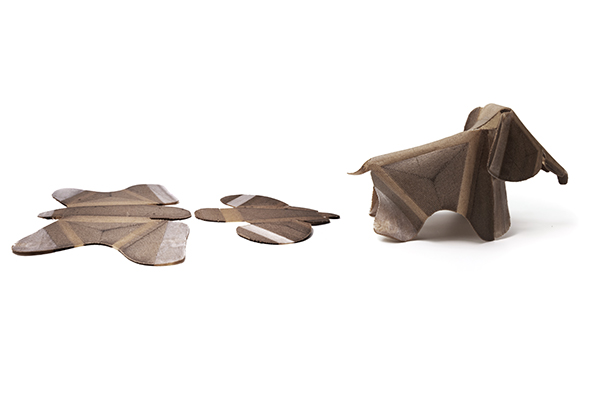What if a toy could be made to have a kind of memory, allowing it to transform and adapt to certain changes to its environmental condition over time? What new avenues for exploration and playfulness might this enable for young kids?
Inspired by the Eames Plywood Elephant and new Eames Elephant made of programmable wood composite by MIT’s Self-Assembly Lab, I am interested in exploring ways of manipulating wood as a programmable material to create a new suite of toys for kids. Image flat pre-cut/printed piece of wood (or perhaps rubber) that springs into shape when it is exposed to water (e.g. inflatable toy for the pool) or temperature (e.g. decorative piece near the mantle for Christmas).
Inspired by contemporary toys:
Tegu Blocks are magnetic wooden blocks that help bring open-ended imaginative play to classrooms for nurturing kids’ creativity, design, and problem-solving skills
What time scale does this “memory” take effect? Are these changes/adaptations reversible? How does the user initiate them? What is the balance of user creativity vs. self-assembly? What is the difference between toys and tools?
-Dan
Udayan’s comment: Dan’s raises some really interesting questions. Take a look at Topobo.


